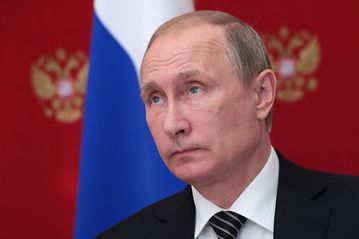The Russian Exchange has halted trading in US dollars and euros following new US sanctions aimed at curbing Russia’s financial capabilities in its ongoing war against Ukraine. The suspension, effective from June 13, 2024, comes as part of a broader set of restrictions introduced by the United States targeting over 300 entities, including institutions in Russia, China, Turkey, and the United Arab Emirates. The Moscow Exchange announced the suspension in a statement, explaining that trading will continue across other segments of the platform, but without instruments involving settlements in US dollars and euros. The exchange emphasized its commitment to providing clients with access to all available trading segments despite these new challenges.
Russian Central Bank announced it would suspend morning trading on the Moscow Exchange’s foreign exchange, precious metals, and derivatives markets starting Friday and continuing until further notice. This decision follows the inclusion of Russia’s National Clearing Center, an intermediary in foreign exchange transactions, in the US sanctions list.
The US Treasury Department’s latest sanctions are part of ongoing efforts to cut off financial resources and goods flowing to Moscow amid the Ukraine conflict. The sanctions are designed to hinder opportunities for both Russians and non-Russians to invest in Russian sovereign debt, corporations, and defense entities. The new measures will take full effect on August 13, 2024. Despite these sanctions, Russian companies and individuals will still be able to conduct transactions involving euros and dollars through various lenders. The Russian Central Bank has assured the public that foreign currency deposits will not be affected. However, the sanctions are expected to complicate currency transactions, though their impact on the ruble’s exchange rate is projected to be limited.
Sofia Donets, chief economist at T-Bank Investments, noted, “We do not expect a significant effect on the ruble-dollar exchange rate. Our forecast for the rest of the year remains in the range of 90-95 rubles/USD.” Donets highlighted that the evolving sanctions regime increases the risks of investing in alternative currencies and jurisdictions for Russians.
Bloomberg’s chief economist for Russia, Alexander Isakov, pointed out that while sanctions will make the ruble more volatile, their primary effect will be secondary. He explained that sanctions will reduce competition in the currency conversion market, allowing banks to widen spreads against customers, potentially increasing the neutral ruble rate or the equilibrium ratio of capital outflow to GDP.
The market reaction to the sanctions was immediate. The Moscow Exchange index dropped by 3.5-4% at the start of trading on Thursday, while shares of the exchange itself plummeted by 15%. This volatility reflects the broader uncertainty introduced by the new US sanctions. In a related context, the Moscow Times a key independent news source has faced significant challenges. Recently branded as a “foreign agent” by the Russian government, this label is seen as an attempt to silence independent journalism in Russia. Despite these pressures, the journalists at The Moscow Times remain committed to delivering accurate and unbiased reporting.
As these sanctions unfold, the global financial community watches closely to gauge the full impact on Russia’s economy and its currency markets. The broader geopolitical implications continue to develop, with international stakeholders assessing the evolving sanctions landscape and its ramifications for global trade and investment.
The current sanctions underscore the ongoing tension between Russia and the United States, highlighting the international community’s response to the conflict in Ukraine. As both sides navigate this complex financial and political terrain, the implications for global markets and international relations remain profound.
The Moscow Exchange and the broader Russian financial system face significant adjustments as they adapt to these new sanctions. The focus now shifts to how effectively Russian institutions can navigate these restrictions and maintain stability in their financial operations amidst increasing international isolation.
















